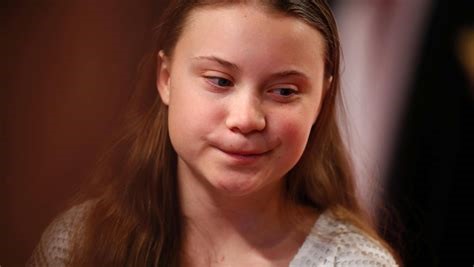Various Types of Autism
by
Dr. Robert Gorter, MD, PhD.
Guru Brar (India)
December 15th, 2022

Greta Tintin Eleonora Ernman Thunberg (*2003) is a Swedish environmental activist who is known for challenging world leaders to take immediate action for climate change mitigation. Thunberg’s activism began when she persuaded her parents to adopt lifestyle choices that reduced their own carbon footprint. In August 2018, at age 15, she started spending her Fridays outside the Swedish Parliament to call for stronger action on climate change by holding up a sign reading Skolstrejk för climate (School strike for climate). Thunberg initially gained notice for her youth and her straightforward and blunt-speaking manner, both in public and to political leaders and assemblies, in which she criticizes world leaders for their failure to take what she considers sufficient action to address the climate crisis. Greta exhibits many symptoms of Asperger’s Syndrome
The various types of Autism are considered a “spectrum disorder” – an umbrella concept, with a range of autistic syndromes at varying degrees of severity. It can also be depicted, and this is my preferred version while educating medical students and parents alike, as a rainbow where the colors blend and overlap. Each of the distinct colors represents a particular category of autism. Yet, the transition from one color to the next on a rainbow is similar to the transition from mild to severe autism.

Elon Reeve Musk (*1971) is a business magnate and investor. He is the founder, CEO, and chief engineer of SpaceX, angel investor, CEO, and product architect of Tesla, Inc., owner, and CEO of Twitter, Inc., founder of The Boring Company, co-founder of Neuralink and OpenAI, and president of the philanthropic Musk Foundation. With an estimated net worth of around $200 billion as of December 2022, Musk is the second-wealthiest person in the world according to both the Bloomberg Billionaires Index and Forbes’s real-time billionaire list. Elon exhibits several symptoms of Asperger’s Syndrome.
The autism spectrum often referred to as just autism or in the context of a professional diagnosis autism spectrum disorder (ASD) or autism spectrum condition (ASC), is a neurodevelopmental condition (or conditions) characterized by difficulties in social interaction, verbal and nonverbal communication, and the presence of repetitive behavior and restricted interests. Other common signs include unusual responses to sensory stimuli.
Autism is generally understood as a spectrum disorder, which means that it can manifest differently in each person: any given autistic individual is likely to show some, but not all, of the characteristics associated with it, and the person may exhibit them to varying degrees. Some autistic people remain nonspeaking over the course of their lifespan, while others have relatively unimpaired spoken language. There is a large variation in the level of support people require, and the same person may present differently at varying times. Historically, autism was divided into sub-categories, but there were persistent questions over the validity of these divisions and the most recent editions of the main diagnostic manuals list ASD as a single disorder.
While psychiatry traditionally classifies autism as a neurodevelopmental disorder, many autistic people, most autistic advocates, and a rapidly increasing number of researchers see autism as part of neurodiversity, the natural diversity in human thinking, and experience, with strengths, differences, and weaknesses. On this view, promoted by the autism rights movement, autism is not pathological, but this does not preclude autistic individuals from being disabled or having high support needs. This relatively positive and holistic view of autism has led to a certain degree of friction between autistic individuals, advocates, charities, researchers, and practitioners.
Scientists are still trying to determine what causes autism; it is highly heritable and believed to be mainly genetic, but there are many genes involved, and environmental factors and childhood vaccinations may also be relevant. It is unclear why autism frequently co-occurs with attention deficit hyperactivity disorder, epilepsy, and intellectual disability, amongst other conditions. There are ongoing disagreements about what should be included as part of the autism diagnosis, whether meaningful sub-types of autism exist, and the significance of autism-associated traits in the wider population. The combination of broader criteria and increased awareness has led to a trend of steadily increasing estimates of autism prevalence. Although there is no cure for autism, early behavioral interventions can help them gain self-care, and social, and language skills. However, independent living is unlikely in those with high support needs, so intervention for these individuals requires finding and learning alternative modes of communication.
Autism Spectrum – The Rainbow Effect
Each of these categories demonstrates varying degrees of difficulties a person faces with social, verbal, communicative and repetitive behaviors. Just as a shade in rainbow overlaps and blends with the next color, so does autism making it harder to determine where one level or type of autism starts and where it terminates.
Modern Interpretation Of Types Of Autism
“Each type of Autism demonstrates a degree of difficulty that a patient faces with verbal, social and communicative interactions. Just as a shade in rainbow overlaps and blends to the next one, so does the autism spectrum; thus turning it into a challenging exercise for physicians to determine where one range in the spectrum starts and where it ends
An Insight Into The Various Types Of Autism
Let us now get a deeper insight into each of the following forms of Autism.
Asperger’s
These classify people who fall under the high-functioning autism spectrum. They are often intelligent and excel in academics and working life. However, their impairment lies in their lack of social skills. While they develop communication and language skills in the same way as any other developing child, their deficits become more obvious with age as they struggle to keep up with the expectations of their family and extended community circles. They often are fixed (monomania) on one aspect of their lives
Pervasive Development Disorder
Pervasive Developmental Disorder – Not Otherwise specified is used to classify people who do not fit into any particular category of Autism. They meet some of the criteria for classical autism, but not necessarily all. Their impairments could range from mild to severe requiring support ranging from anywhere between Level 1 to Level 2. The functioning level is usually moderate to high, barring exceptions where they overlap with other disorder syndromes.
Childhood Disintegrative Disorder
CDD, also known as Heller’s Syndrome, is an interesting one; that typically affects toddlers and pre-schoolers. In this case, the child grows normally until (at least) the age of 2 and then shows a sudden drop in social, communication, and behavioral skills. CDD is often overlooked initially by the parents as they tend to attribute this sudden impairment as a ‘transient and temporary’ phase for their child and would expect it to pass away.
Rett’s Syndrome
Rett’s syndrome occurs only in girls – the only form of Autism Spectrum Disorder that can be diagnosed and medically confirmed. Girls with Rett’s Syndrome suffer from significant communication impairment. Also, one of the common symptoms of Rett’s Syndrome is the girl’s limited ability to use their hands for regular activity. Typically this syndrome deteriorates with the girl’s age, thus requiring more support and time.
Classical Autism
Among all the various types of Autism, Classical autism is perhaps the broadest and most predominant form of autism. In technical terms, anyone showing autistic tendencies that satisfy the guidelines laid out by “DSM 5 Autism Spectrum Disorder” is termed Autistic.
The effects of autism in such people may range from mild to very severe. Research has shown that the brain of autistic children has a fair number of electric impulses than any other normal brain of similar age.
To conclude, even though these are the five main types of Autism, the actual list is far more extensive. It is highly likely that any particular individual can exhibit autistic trends from one or more forms of Autism and therefore may require a varying level of support from medical professionals, therapists and (above all) their families.
More on Asperger’s Syndrome Signs and Symptoms
Navigating the signs can be challenging, given the highly unique nature of this disorder.
Children and adults with Asperger’s syndrome experience a wide variety of symptoms, and no two cases are exactly the same.
Some individuals will face minor issues that don’t interfere with their everyday lives, while others will struggle to function in academic, social, and workplace environments.
For many years, Asperger’s syndrome was considered a distinct diagnosis, but in 2013 the American Psychiatric Association reclassified Asperger’s under the broader umbrella diagnosis of autism spectrum disorders (ASD). However, many clinicians continue to reference Asperger’s syndrome as part of discussions with patients and families when looking at a potential ASD diagnosis.
Knowing the symptoms of Asperger’s can help parents, their environment, and the affected themselves, get an accurate diagnosis.

William Henry Gates III (*1955) is an American business magnate. He is a co-founder of Microsoft, along with his late childhood friend Paul Allen. During his career at Microsoft, Gates held the positions of chairman, chief executive officer (CEO), president, and chief software architect, while also being the largest individual shareholder until May 2014. He was a major entrepreneur in the microcomputer revolution of the 1970s and 1980s. Bill Gates exhibits many symptoms of Asperger‘s Syndrome.
Common Signs and Symptoms of Asperger’s
There are many signs and symptoms of Asperger’s. Children might display just a few, several, or all the signature behaviors.
Social Symptoms
One telltale sign of Asperger’s syndrome is having difficulty in social situations.
Common symptoms of Asperger’s that may impact social interaction or communication include:
- Problems making or maintaining friendships
- Isolation or minimal interaction in social situations
- Poor eye contact or the tendency to stare at others
- Trouble interpreting gestures
- Inability to recognize humor, irony, and sarcasm
- Inappropriate behaviors or odd mannerisms
- Problems expressing empathy, controlling emotions, or communicating feelings
- An apparent lack of „common sense“
- Tendency to engage in one-sided conversations (about oneself)
- Fixation with certain topics
- Interpretation of information as literal
- The preference for a strict schedule or routine
- An impulsive (aggressive) behavior
An adult or child with Asperger’s may not show all these signs, but in general, tends to struggle in social situations.

The potential for the development of harmful psychological disorders typically occurs during puberty or immediately thereafter. The most common disorders among people living with Asperger’s Syndrome are anxiety and depression. A small cohort study in the UK studied suicidal ideation in men and women diagnosed with Asperger’s Syndrome. Adults were significantly more likely to report suicidal ideation over the course of their life than the general population.
Some people might interpret a child’s symptoms as simply rude behavior. For instance, individuals with Asperger’s might talk exclusively about themselves. They may not recognize when someone is uncomfortable, uninterested, or offended. Because they don’t always recognize social cues, they may speak loudly at inappropriate times, such as during a church service.
A person with Asperger’s might talk obsessively about one particular subject. For example, he or she might be able to recite different types of flowers or sports statistics at a level that goes beyond what might be considered avid interest.
Language and Speech Issues
Unlike other autism spectrum disorders, a person with Asperger’s typically doesn’t experience a speech delay. But, they do have specific language behaviors that set them apart.
A child or adult with Asperger’s may exhibit the following:
- A scripted, formal, or “robotic” type of speaking
- Lack of inflection when talking
- Repetitive speech
- Trouble using language in a social context
- Loud or high-pitched speech
Individuals with Asperger’s typically have an advanced vocabulary and good grammar skills, but they might not be able to use language appropriately in social situations.
To an outsider, the speech pattern of a child with Asperger’s may sound unusual. They may speak in a very monotone or rhythmic manner, with a loud voice.
Cognitive Behaviors
Typically, kids and adults with Asperger’s have normal to above-average intelligence. While some excel academically, others might struggle.
Some common cognitive traits in people with Asperger’s include:
- A superior rote memory
- Ability to understand technical or factual information
- Trouble absorbing abstract information
- Tendency to focus on details, which may result in missing “the bigger picture”
Children with Asperger’s might experience trouble focusing or have a nonverbal associated learning disability that can affect their reading, writing, or math skills. Still, many don’t have any cognitive issues.
On the other hand, they can be fixed (monomane) and excell in one particular (intellectual) aspect
Physical Symptoms
Kids with Asperger’s might experience physical symptoms, such as:
- Delay in motor skills
- Awkward movements
- Problems with coordination
- Sensitivity to loud noises, odors, clothing, or food textures
Children with Asperger’s may appear clumsy or awkward. They might have trouble with simple activities, such as catching a ball or swinging on monkey bars at a playground. But some kids don’t have any motor skill problems.
Does Asperger’s Cause Violent Behavior?
Many parents wonder if Asperger’s syndrome is associated with violent behavior. The answer doesn’t seem to be clear-cut.
Several high-profile mass murder incidents, including the 2007 Virginia Tech shooting, the 2012 Newtown, Connecticut, massacre, and the 2018 Parkland, Florida, tragedy, were allegedly committed by men with an autism spectrum disorder.
But while Asperger’s may provoke some aggressive behaviors, most research shows no specific association between violent crime and autism alone. Some studies have suggested that other, accompanying psychiatric disorders may explain violent behaviors in people with autism.
Scientists continue to study the link and hope to provide more insight about whether certain psychiatric conditions, including Asperger’s, may at times play a role in violent crimes.
Common Diagnoses That Go With Asperger’s
Some conditions, which have their own set of signs and symptoms, are more common in kids and adults with Asperger’s. These may include:
- Depression
- Anxiety
- Attention deficit hyperactivity disorder (ADHD)
- Tourette’s syndrome
- Epilepsy
These coexisting conditions can cause other symptoms that aren’t necessarily characteristic of Asperger’s.
Asperger’s Sometimes Comes With Special Talents
Many people with Asperger’s syndrome view their symptoms as gifts. Some positive attributes that set apart some people with Asperger’s may include:
- A high IQ
- The ability to focus on something intensely (fixation)
- A remarkable rote memory
- A unique sense of humor
- A high esteem for fairness and honesty
Many people with Asperger’s have special talents and abilities. There are plenty of adults with the diagnosis who are successful lawyers, business men, physicians, artists, authors, professors, and educators.
In fact, some individuals with Asperger’s are offended by the notion that their symptoms need to be “treated” or “cured.”
Asperger’s: Not a One-Size-Fits-All Disorder
No two people with Asperger’s are exactly alike. The disorder manifests itself in various ways, and many people experience different symptoms than others do. Some have only mild issues, while some face major challenges.
Also, because Asperger’s is now categorized under the broader ASD diagnosis, some of the symptoms are no longer recognized as being exclusively Asperger’s but rather “on the spectrum.”
The main takeaway for parents is to see a professional if your child experiences any unusual signs or symptoms that may indicate he or she has an autism spectrum disorder. This can ensure an accurate and swift diagnosis.
The sooner children are diagnosed, the sooner they can start on effective treatments that could help them live as fully as possible, despite whatever limits their unique experience with the condition may bring.